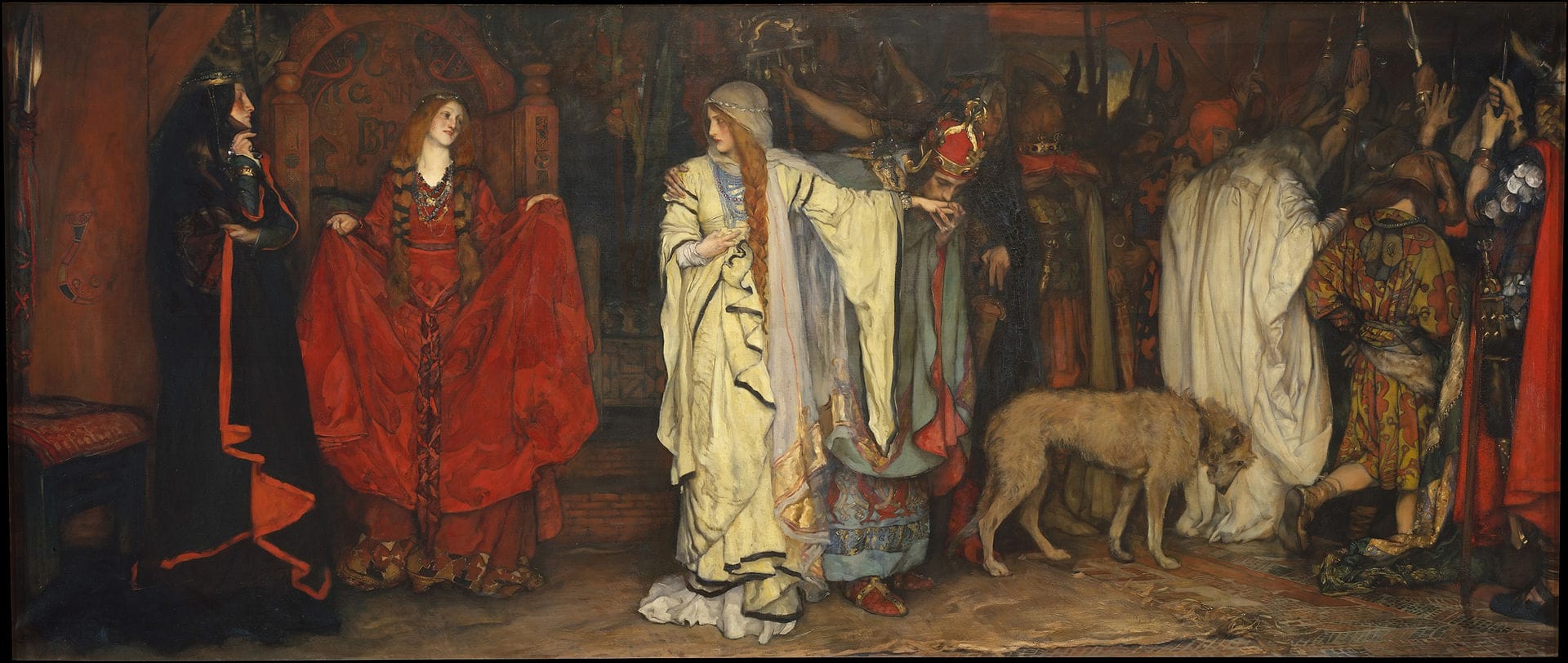Cordelia

Shakespeare's Cordelia has not fared well in painting. There were, after all, only three acceptable poses - her disinheritance and banishment, her reconciliation with her father in prison, and her death. All three involve pathos. There never could be any paintings of her as a heroic warrior queen, personally leading her army into battle and winning. That's what Queen Cordelia does in Geoffrey of Monmouth's Historia Regum Britanniae - Shakespeare's source material. Worse, now she was virtually French!
None of the 18th and 19th century paintings are particularly interesting, except for Edwin Austin Abbey's brilliant Cordelia's Farewell (1898), shown below. Goneril and Regan are on the left, Lear in white in the center. It has to be seen in person to be truly appreciated.

Not that any other Shakespearean heroines escape their Shakespearean fates in art. Certainly not Rosalind from As You Like It and not Olivia and Viola from Twelfth Night. Let's not even mention Ophelia and Cleopatra, or Juliet and Desdemona in this chapter, where deathbed scenes predominate. Miranda in The Tempest was popular but she did a lot of standing around glamorously, looking out to sea (Goodall, Dicksee, Waterhouse).
I find only the paintings of Portia and Jessica from The Merchant of Venice interesting. Below is a fascinating painting Shylock and Jessica, by Polish-Jewish artist Maurycy Gottlieb, which was highly acclaimed in 1876 after winning a gold medal at a Munich art competition. Gottlieb died a few years later at the age of 23 reportedly because he was distraught over being rejected by the woman who modeled for Jessica - he walked out in the cold in order to become ill. The original painting is long lost - only photos survive - likely destroyed by the Nazis.

